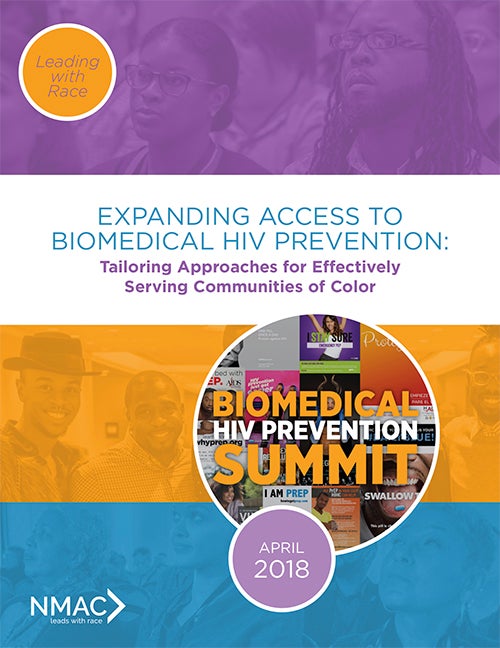
Over the past two years, the O’Neill Institute has been working in partnership with NMAC to examine the status of biomedical HIV prevention research and implementation in the United States. The focus of this work has been to explore how to bring the promise of biomedical HIV prevention to all communities highly impacted by HIV and to ensure that communities of color in particular are not left behind. Biomedical HIV prevention offers a range of tools that can effectively prevent HIV infection. These tools include treatment as prevention (TasP), pre-exposure prophylaxis (PrEP), and post-exposure prophylaxis (PEP).
Last week, NMAC released a new report, “Expanding Access to Biomedical HIV Prevention: Tailoring Approaches for Effectively Serving Communities of Color,” as the second part of its two-part Blueprint for HIV Biomedical Prevention. Jeffrey Crowley and I prepared the report for NMAC. The report highlights the unique challenges that people of color face in HIV prevention, care, and treatment and gives ways to improve access to biomedical HIV prevention in communities of color.
The report outlines population-specific recommendations to more effectively meet the needs of transgender people of color, Black and Latino gay and bisexual men, women of color, and adolescents and young adults of color. It also includes further steps that can be taken separately in service of transgender women of color and transgender men of color.
Recommendations for Transgender People of Color
- Build the capacity of the HIV clinical and non-clinical care systems to meet the needs of trans people of color
- Hire trans people of color in our agencies
- Generate high quality trans-specific data
- Address safety concerns over HIV medications and hormones
Recommendations for Black Gay and Bisexual Men
- Follow the science to bring evidence-based interventions, such HIV Prevention Trials Network (HPTN) 073, to scale in the real world
- Actively counter mistrust of providers and the health system
- Cultivate a diverse scientific and clinical workforce trained in applying multidisciplinary approaches
- Educate the support systems for Black gay and bisexual men
Recommendations for Latino Gay and Bisexual Men
- Bolster community resiliency through culturally responsive and linguistically appropriate interventions
- Tailor HIV treatment and prevention efforts to specific Latino subgroups
- Promote leadership among Latino gay and bisexual men to address issues disproportionately affecting their peers
- Center the voices of undocumented Latinos
Recommendations for Women of Color
- Tailor HIV prevention messages to reach women of color
- Offer PrEP in family planning clinics
- Educate providers about the importance of PrEP for women of color
- Support the adoption of new models of trauma-informed primary care
- Address unique issues related to juggling family, work, and other responsibilities
Recommendations for Adolescents and Young Adults of Color
- Work to obtain FDA approval of PrEP for adolescents under age 18
- Identify and share best practices for addressing consent, confidentiality, and cost barriers for PrEP
- Work to augment resources dedicated to reach young people of color who need ART or PrEP and support them in staying in care and adhering to their medication
- Disseminate HIV prevention information through youth serving organizations
- Build support for comprehensive health education and the integration of PrEP information into health education curricula
- Educate communities of color about state laws that affect the sexual health of young people
Increasing access to biomedical HIV prevention without reaching people and communities of color and understanding their needs, values, cultural backgrounds, and barriers to care will cause us to expand rather than shrink HIV-related disparities and health inequities. To learn more, you can read this report here and the Blueprint for HIV Biomedical Prevention: State of the State report here.



